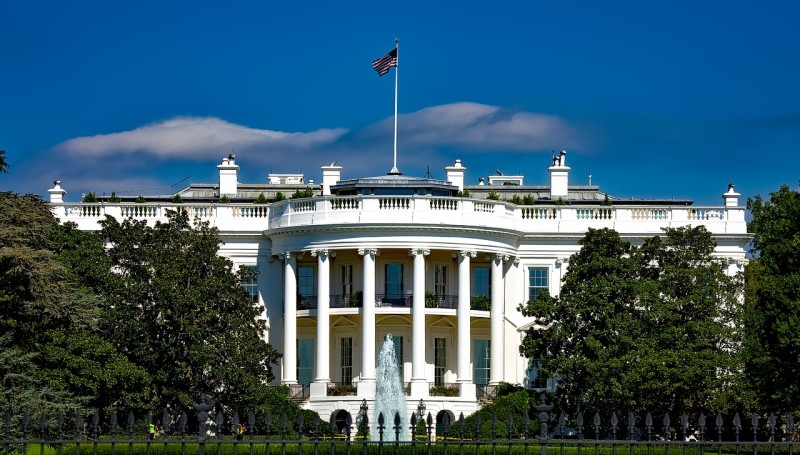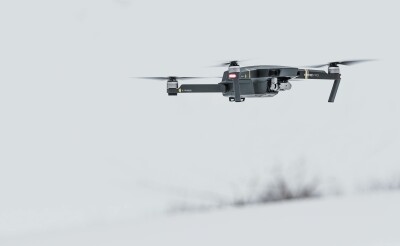In August, the White House Office of Science and Technology Policy hosted the White House Summit on Advanced Air Mobility (AAM). Industry leaders, government regulators, researchers, and other experts assembled to discuss the future of AAM, as well as other issues related to the advancement of uncrewed aircraft systems (UAS) in the US.
Recently, Commercial UAV News spoke with Lisa Ellman, co-founder and Executive Director of the Commercial Drone Alliance (CDA), about the White House Summit. An attorney, Ellman chairs the UAS practice at Hogan Lovells in Washington, D.C. She also served as industry lead on the FAA’s Beyond Visual Line of Sight Aviation Rulemaking Committee (BVLOS ARC).

Commercial UAV News: From CDA’s perspective, what positives – and negatives – came out of August 3 White House Summit on AAM?
Ellman: The White House Summit on AAM marked a historic, first-of-its-kind summit that brought together stakeholders from industry and government to advance uncrewed aircraft systems and electric vertical takeoff and landing (eVTOL). Pioneering these innovative aviation technologies is important to the economy, public safety, the environment, and equity. From a national security perspective, enabling US leadership represents a strategic imperative in a market long characterized by state-subsidized companies based in countries of concern. The Summit marked a unique moment in time for US global leadership in advanced aviation. We appreciate the Administration’s engagement.
Commercial UAV News: Following the Summit, you said that “President Biden now has the opportunity to take strong executive action unleashing the potential of these advanced aviation technologies.” What would that executive action look like?
Ellman: The Summit was an important step forward, but it was only a step. Next, given the interagency dynamics of UAS and AAM integration, it is necessary for the White House to issue an Executive Order or Presidential Memorandum directing implementation of a whole-of-government approach to develop national policies and priorities to support advanced aviation development.
We are working together now as an industry to consolidate many great ideas for the White House for potential future executive action. As we highlighted during the White House AAM Summit, executive action should focus on promoting US global leadership, growing the economy, enhancing safety, promoting sustainable transportation solutions, achieving equity through innovation, and enhancing national security.
Commercial UAV News: Describe your engagement with the FAA and other agencies. How do you work together to resolve outstanding issues?
Ellman: It is a timeless issue, shared across innovative industries, that technology moves more quickly than regulatory frameworks. That is certainly the case for drones. The CDA has worked with industry, federal agencies, and other relevant stakeholders to address these challenges.
There are many at the FAA who are working tirelessly to integrate UAS into the national airspace (NAS). We help educate FAA offices on UAS technology, the future of the marketplace, and existing regulatory challenges, so the agency has a better understanding of the market they are seeking to regulate. We also educate the FAA, other federal agencies, and the public on societal benefits of commercial drone use including public health, safety, sustainability, efficiency, and enhancing US global competitiveness. The CDA regularly meets with executive and legislative branch policy officials and works collaboratively to move innovation and safety forward.
Commercial UAV News: What, if anything, do you see happening on the regulatory and legislative front in the coming year?
Ellman: This is a very busy time for the industry on legal and regulatory front. We expect to see a number of legislative and regulatory measures in the upcoming year. Just a few examples include:
BVLOS ARC Rulemaking - The FAA’s Beyond Visual Line of Sight Aviation Rulemaking Committee report marks an important step forward and the FAA is working to implement recommendations from the ARC, which was composed of a broad range of industry stakeholders. We hope to see a timely set of proposed rules from the FAA that implement the ARC recommendations, and we look forward to commenting on those proposed rules.
FAA Reauthorization - The FAA Reauthorization is an excellent opportunity to move UAS policy making forward and CDA has been heavily engaged in this process. CDA worked with its members, the federal government, and other industry stakeholders to develop priorities for the 2023 FAA Reauthorization. These priorities include: policy and resourcing to allow FAA to align responsibility for UAS integration with authority over UAS approvals; issuing a notice of proposed rulemaking enabling BVLOS operations in accordance with the BVLOS ARC recommendations; enabling research and development to promote US leadership in aviation; improving the Blue UAS program; and promoting infrastructure resilience. CDA will be participating as a panelist in the Senate Commerce Committee Aviation Subcommittee’s first hearing on the topic of FAA Reauthorization on September 28, 2022.
















Comments